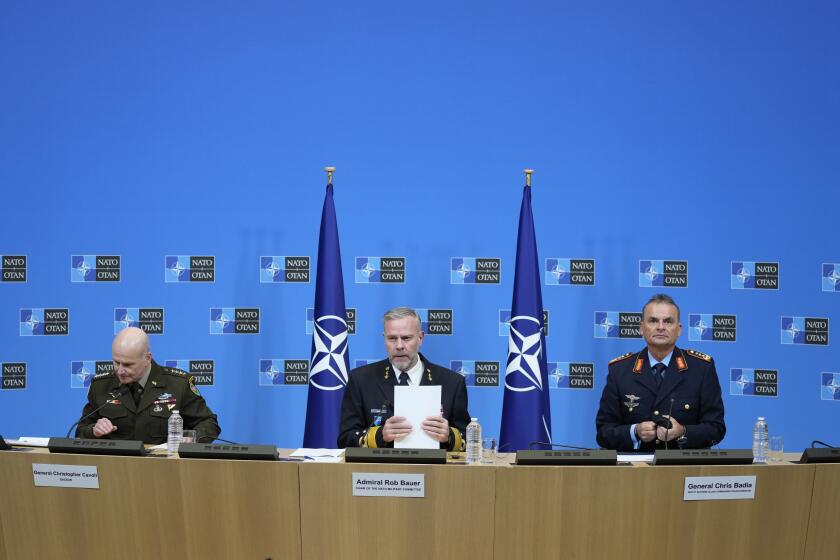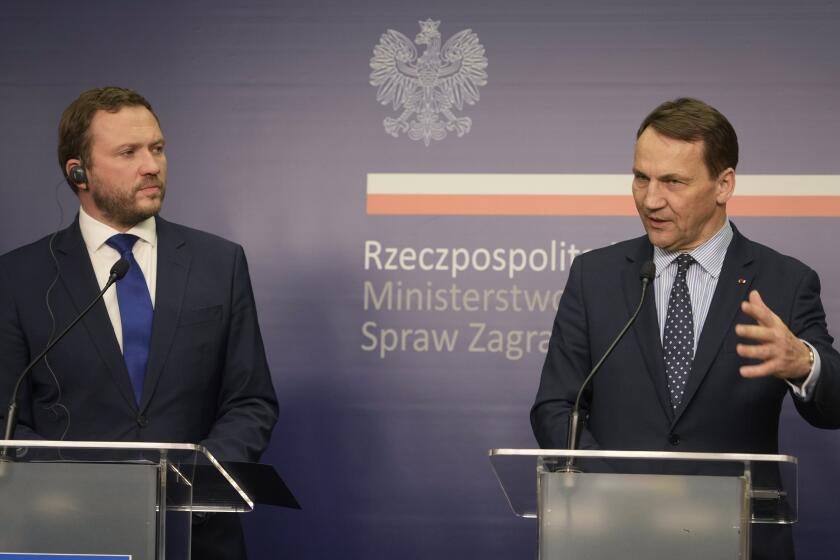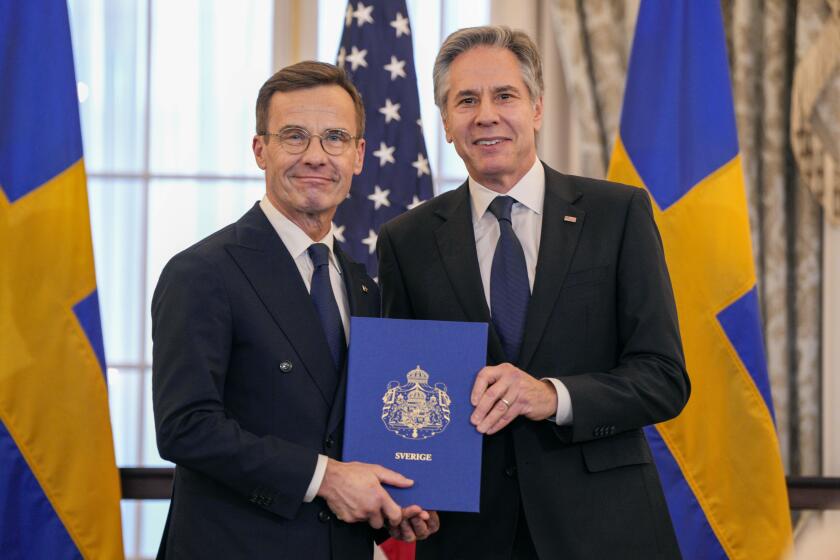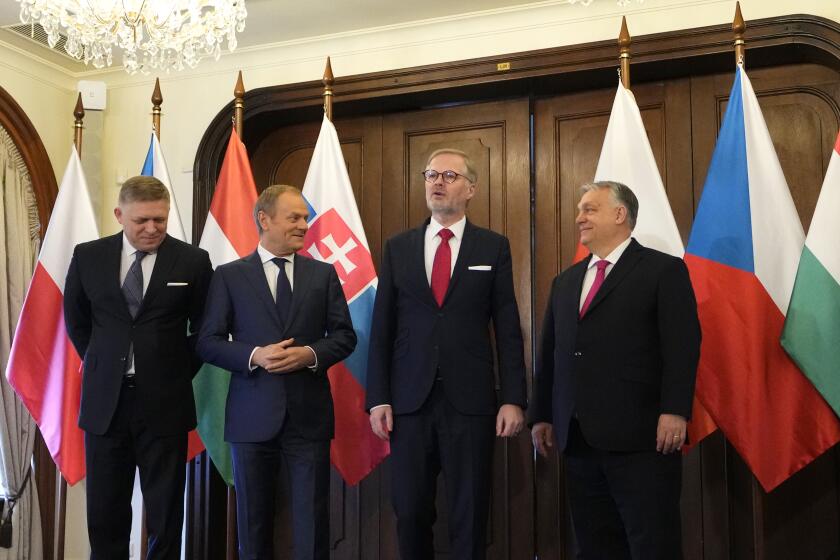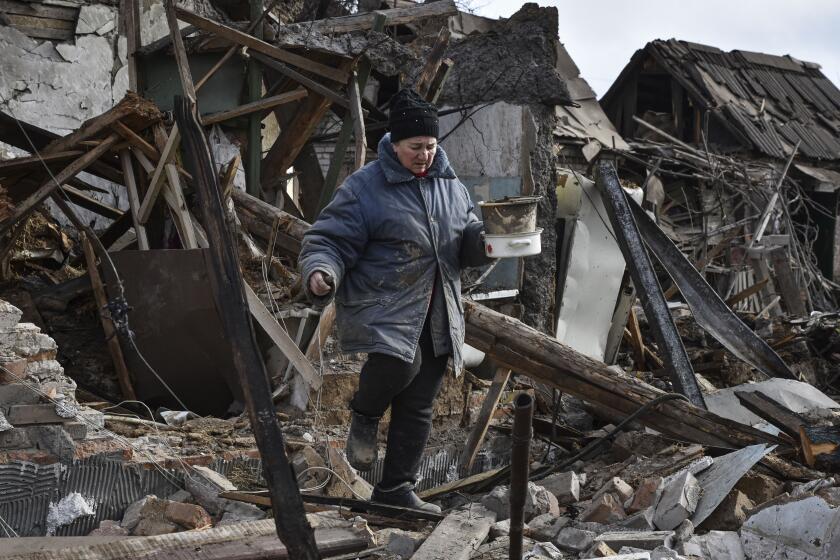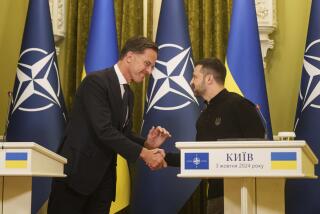NATO marks its 75th birthday as Russia’s war in Ukraine gnaws at its unity
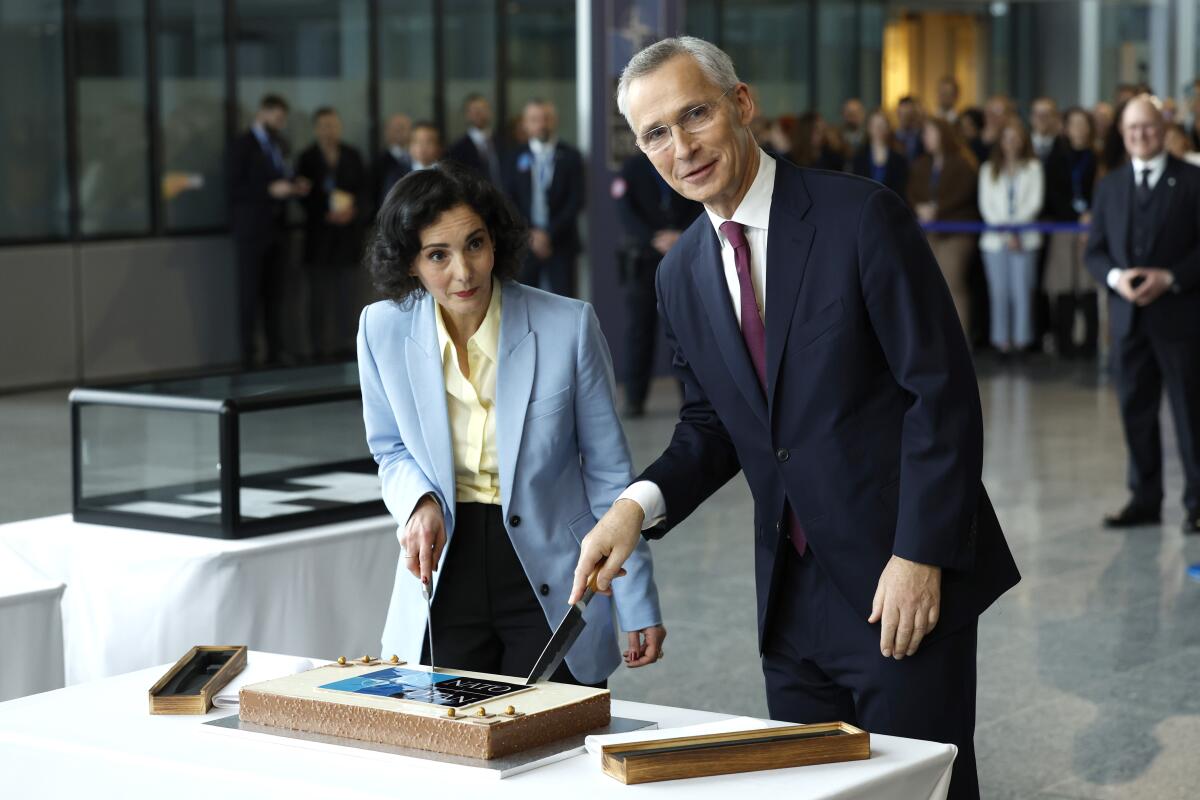
BRUSSELS — NATO on Thursday marked 75 years of collective defense across Europe and North America, with its top diplomats vowing to stay the course in Ukraine as better-armed Russian troops assert control on the battlefield.
The anniversary comes as the now-32-nation alliance weighs a plan to provide more predictable longer-term military support to Ukraine. Beset by ammunition shortages, Ukraine this week lowered the military conscription age from 27 to 25 in an effort to replenish its depleted ranks and appealed for additional air defenses to counter Russian ballistic missile attacks.
“I didn’t want to spoil the birthday party for NATO, but I felt compelled to deliver a sobering message on behalf of Ukrainians about the state of Russian air attacks on my country, destroying our energy system, our economy, killing civilians,” said Ukrainian Foreign Minister Dmytro Kuleba, who attended a meeting of the NATO-Ukraine Council.
NATO next week will launch its biggest war games in decades, with about 90,000 personnel set to take part in months-long military exercises.
Kuleba thanked the allies for agreeing to begin identifying Patriot missile battery stocks that could be sent to Ukraine. The Patriot “is the only system that effectively intercepts ballistic missiles,” he said.
U.S. Secretary of State Antony Blinken, speaking before meeting with Kuleba, said that “support for Ukraine, the determination of every country represented here at NATO, remains rock solid.”
“We will do everything we can, allies will do everything that they can, to ensure that Ukraine has what it needs to continue to deal with Russia’s ongoing aggression against Ukraine, aggression that is getting worse with every passing day,” he said.
“The fight that Ukraine has on its hands is not only Ukraine’s fight, it’s everyone’s fight because the aggression being committed by Russia is not only an aggression against Ukraine and its people, it’s an aggression against the very principles that lie at the heart of the international system,” Blinken said.
Estonia, Lithuania and Latvia are considered among the most likely targets if Russia one day decides to risk an attack on the NATO alliance.
The Ukraine meeting, which ran significantly beyond its scheduled time, was held after a ceremony to mark the day NATO’s founding treaty was signed: April 4, 1949, in Washington. A bigger celebration is planned when NATO leaders meet in Washington from July 9 to 11.
Hundreds of staffers filled the vast air terminal-like space at the center of NATO’s sprawling Brussels headquarters, while scores of others looked down from glassed walkways and stairways as Belgian and Dutch military bands played the NATO Hymn, the original Washington Treaty laid before them.
“I like the Washington Treaty. Not least because it is very short,” NATO Secretary-General Jens Stoltenberg said with a smile. “Just 14 paragraphs over a few pages. Never has a single document with so few words meant so much to so many people. So much security. So much prosperity, and so much peace.”
Sweden’s foreign minister, Tobias Billstrom, was taking part in the first ministerial-level meeting since his country became NATO’s 32nd ally last month. Russia’s full-scale invasion of Ukraine in February 2022 drove Sweden and Finland into NATO’s arms.
Sweden has formally joined NATO as the 32nd member of the transatlantic military alliance, ending decades of post-World War II neutrality.
“NATO represents the freedom to choose,” Finnish Foreign Minister Elina Valtonen said, reflecting on the way the Nordic neighbors recently joined. “Democratic nations, free people chose to join. Unlike how Russia expands its by aggression or by illegal annexation.”
President Vladimir Putin said he launched the war, in part at least, because NATO was expanding closer to Russia’s borders.
The alliance’s ranks have almost tripled from its 12 founding members, but Finland and Sweden joined in record time to shelter under NATO’s collective security guarantee.
That promise — Article 5 of the Washington Treaty — stipulates that an attack on any one of their number must be met with a united response. It’s only ever been used once, after the Sept. 11, 2001, terrorist attacks in the United States.
In a statement, President Biden hailed NATO as “the greatest military alliance in the history of the world.”
The prime ministers of the Czech Republic, Hungary, Poland and Slovakia say they are deeply divided over Russia’s war against Ukraine.
“We must remember that the sacred commitment we make to our Allies — to defend every inch of NATO territory — makes us safer too, and gives the United States a bulwark of security unrivaled by any other nation in the world.”
Among the more recent successes as it grew from the Cold War and after the Berlin Wall collapsed, NATO would count its 1999 air campaign against former Yugoslavia to end a bloody crackdown on separatist ethnic Albanians and its effort to avert near civil war in Macedonia in 2001.
At the other end of the scale lies the operation in Afghanistan. NATO took command of the security effort in 2003 and it became the longest, costliest and deadliest in alliance history. It was marked by a chaotic retreat in August 2021, many of the successes over almost two decades abandoned.
Today, Ukraine also wants a seat at NATO’s table, but the alliance works on unanimity and there is no consensus on whether it should join. Most allies oppose membership while war rages on anyway. For now, NATO promises only that its door is open for Ukraine in the future.
Vladimir Putin has scoffed at the possibility of Russia launching an attack on a NATO member. Still, he says Western bases hosting Ukraine F-16s would be targets.
NATO allies cannot agree on whether to arm Ukraine either. As an organization, the alliance only provides non-lethal support like transport vehicles, fuel, combat rations, medical supplies and demining equipment. However, many members provide arms and ammunition bilaterally or in groups.
The bulk of NATO’s efforts since Russian troops began massing for the invasion has focused on reinforcing its own borders near Russia and Ukraine to dissuade Putin from targeting any of the allies next.
Article 5 was given perhaps its toughest test during Donald Trump’s term as president of the United States — by far NATO’s most powerful member country. Trump suggested the U.S. might not defend any NATO ally that failed to boost their own defense spending to at least 2% of gross domestic product, as all had agreed to do in 2014.
Trump has repeated the threat during election campaigning this year. NATO predicts that 18 of its 32 members will reach that target this year, up from only three a decade ago.
Cook and Lee write for the Associated Press.
More to Read
Sign up for Essential California
The most important California stories and recommendations in your inbox every morning.
You may occasionally receive promotional content from the Los Angeles Times.
